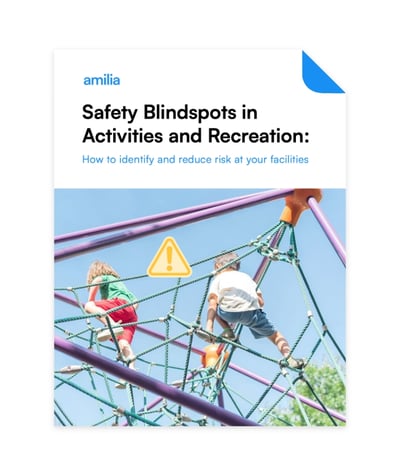What's in the eBook?
As a leader at your parks and recreation agency, you know how important your facilities are to your community. They provide opportunities for outdoor recreation, physical activity, and social interaction, just to name a few. However, like so many public facilities, these areas can also come with the potential for safety risks.
This eBook is designed to provide you with a guide to identifying the safety blindspots at your parks and recreation facilities and to give you some guidance on how to effectively address and prevent them.
With this eBook's how-tos, examples and extra resources, you'll be sure you are doing absolutely everything you can to create the safest environment possible!
1. Types of safety blindspots
There are several different types of safety blindspots that are possible to find within your parks and recreation facilities. For example, some can be environmental such as underwater hazards in bodies of water. Some can also be structural or behavioral.
2. Why do safety blindspots happen?
There are several reasons why safety blindspots exist in parks and recreation environments and being aware of the causation can help you address the issues. For example, it could be a resource issue, a communications issue or complacency!
3. Identifying safety blindspots
Identifying safety blindspots is a crucial step. It’s all about making sure you and your staff stay alert and keep your eyes open, listen to and record experiences (past and present), as well as putting trust in the pros!
4. Strategies to address blindspots
Once you have identified potential safety blindspots in your parks and recreation areas, it's time to take action to address them such as implementing new policies or more frequent trainings.
5. Extra safety resources
Don’t forget that you aren’t in it alone, with the resources provided in this eBook and the help of experts, we’re confident that your residents are in safe hands.
And much, much more!
In this eBook, you'll find plenty of options of how and when you can take those next steps towards addressing safety blindspots.
